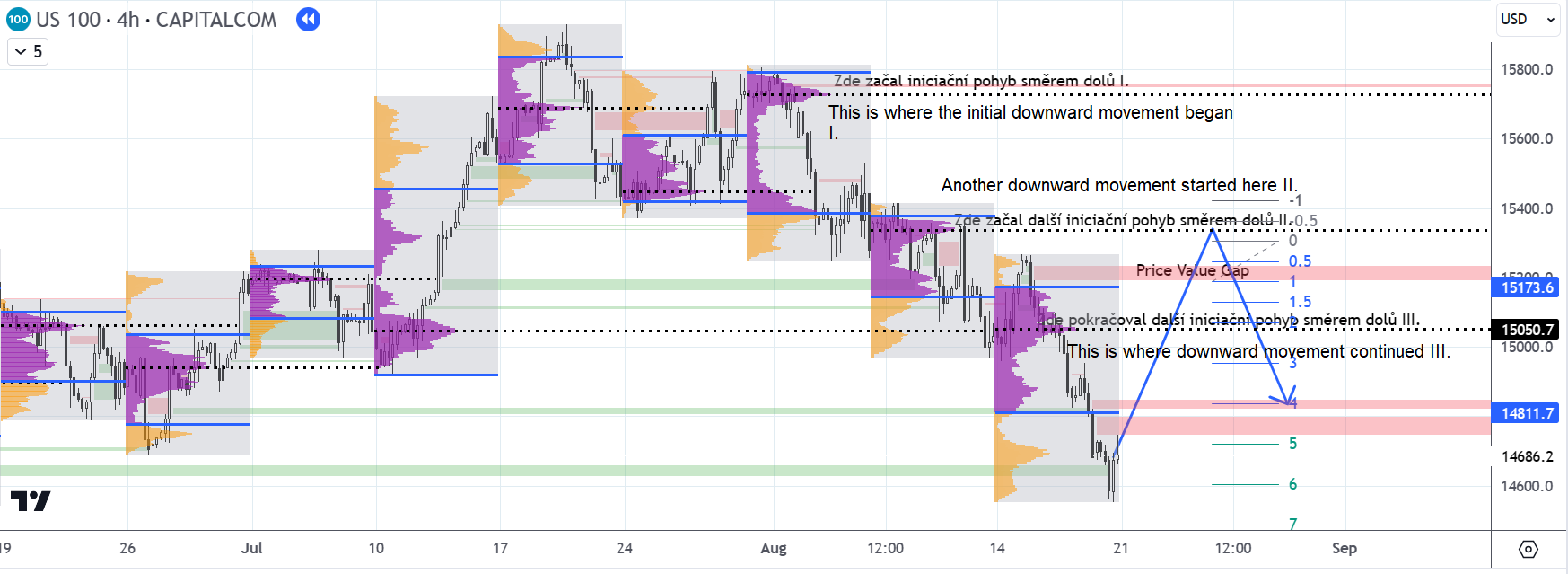How to trade with the big players
As retail traders, we have the advantage of being able to identify the footprints of the big players and then walk inside them. For example, we can do this like this:
- We identify where the trend movement that accompanies the Price Value gaps began. Often this will be a high-volume spot that is identified on the Volume Profile.
- We wait for the price to return to that spot.
- Then we speculate that the price will break out in its original direction.
Let's look at an example, again on the NASDAQ index.
 Chart 2: NASDAQ on H4 chart - trade entry levels by volume according to Volume Profile
Chart 2: NASDAQ on H4 chart - trade entry levels by volume according to Volume Profile
We have identified three levels where the initiation movement started, which triggered the downtrend. Coincidentally, this is the POC (Point of Control), but this is not necessarily the case. In red on the right side of the chart are the unfilled bearish Price Value Gaps. These represent imbalances and therefore tend to be filled. We will wait for the price to fill the gaps and return to the area from which the downward movement began. Then we speculate short.
In our case, the ideal levels are II and I. For level III, the situation is uncertain due to the fact that there is another Price Value Gap above this level. Since gaps tend to be filled, there is a risk that the price might not immediately bounce down at level III, but continue upwards towards this gap.
Chart 3: Entering a short trade at a level with significant volume
In the next picture we see that in the following week the price returned to the level II and was followed by another price decline, which stopped practically at the lower Value Area Low (VAL) of the previous week. So here would have been a trade with a potential Risk Reward Ratio of 1:4 if we had speculated to the previous VAL.
Thus, the clues of the big players are seen in the charts in the form of Price Value Gaps and then higher volumes at the price levels that the Volume Profile can show us. Appropriate use of this knowledge can increase the chances of achieving success in the trading industry.